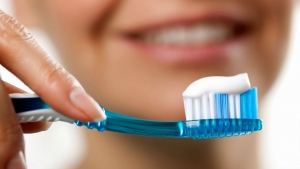Before you even move to open your tube of toothpaste, the quality of your tooth-brushing session has already been determined. We’re talking, of course, about your toothbrush.
How is your toothbrush, and is it working as hard at keeping your teeth clean as you are? Here are a few ways to tell.
A toothbrush is good when:
- It’s comfortable. Don’t worry about fancy add-ons—buy what you like and what feels right.
- It has soft bristles. Ask your dentist and hygienist about this one, but the ADA recommends that most people use soft-bristled brushes to avoid damaging their teeth and gums.
- It’s (relatively) new. When was the last time you switched out your toothbrush? Three months is about the right time to switch out, and sooner if you notice any discoloration or fraying of the bristles.
- It’s clean and dry. This is very, very important! Wet, un-rinsed toothbrushes can harbor bacteria that can actually make your mouth less clean when you brush.
- Power brushes have been proven to be superior to manual brushes due to the amount of strokes/minute but even power brush heads need to be replaced. 3 months is a good rule of thumb for any brush you choose.
Does your toothbrush pass the test?



